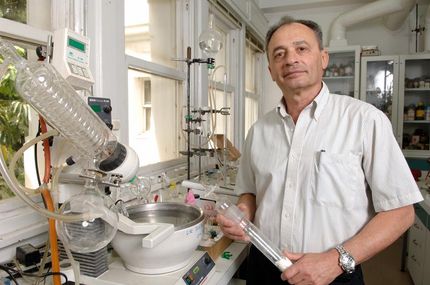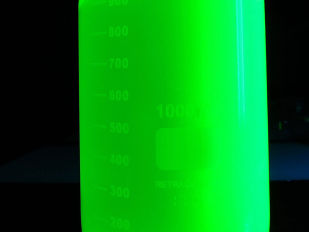Important breakthrough for renewable energy sources
Researchers from the Department of Chemistry at the Royal Institute of Technology (KTH) in Stockholm, Sweden, have managed to construct a molecular catalyzer that can oxidize water to oxygen very rapidly. In fact, these KTH scientists are the first to reach speeds similar to those is nature’s own photosynthesis, which is also a world record. The research findings play a critical role for the future use of solar energy and other renewable energy sources, which is of great interest as gasoline prices are constantly setting new records.
Researchers all over the world, including the US, Japan, and the EU, have been focusing for more than 30 years on refining an artificial form of photosynthesis. The results have varied, but above all researchers have not succeeded in creating a sufficiently rapid solar-driven catalyzer for oxidizing water.
– Speed has been the main problem, the bottleneck, when it comes to creating perfect artificial photosynthesis, says Licheng Sun, professor of organic chemistry at KTH.
But now, together with research colleagues, he has imitated natural photosynthesis and thereby succeeded in creating a molecular catalyzer that is record fast. The speed with which natural photosynthesis does its job is given as 100 to 400 turnovers per seconds. The KTH have reached over 300 turnovers per seconds with their artificial photosynthesis.
– This is clearly a world record, and a breakthrough regarding a molecular catalyzer in artificial photosynthesis, says Licheng Sun.
The fact that the KTH researchers are now close to nature’s own photosynthesis regarding speed opens up many new possibilities, especially for renewable energy sources.
– This speed makes it possible in the future to create large-scale facilities for producing hydrogen in the Sahara, where there’s an abundance of sunshine. Or to attain much more efficient solar energy conversion to electricity, combining this with traditional solar cells, than is possible today, says Licheng Sun.
He points to the problem of skyrocketing gasoline prices, and these advances with the rapid molecular catalyzers can in turn lay the groundwork for many important changes. On the one hand, they make it possible to use sunlight to convert carbon dioxide into various fuels, such as methanol. On the other hand, the technology can be created to convert solar energy directly into hydrogen. Licheng Sun adds that he and his research colleagues are working hard and pursing intensive research to make this technology inexpensive.
– I’m convinced that it will be possible in ten years to produce technology based on this type of research that is sufficiently cheap to compete with carbon-based fuels. This explains why Barack Obama is investing billions of dollars in this type of research, says Licheng Sun.
He has conducted research in this field for nearly twenty years, more than half of that time at KTH, and adds that he and many other researchers see efficient catalyzers for oxidation of water as key to solving the solar energy problem.
– When it comes to renewable energy sources, using the sun is one of the best ways to go, says Licheng Sun.
The research findings are of such importance that they have recently attracted the attention of the scientific journal Nature Chemistry.
Other news from the department science
Most read news
More news from our other portals
See the theme worlds for related content
Topic world Synthesis
Chemical synthesis is at the heart of modern chemistry and enables the targeted production of molecules with specific properties. By combining starting materials in defined reaction conditions, chemists can create a wide range of compounds, from simple molecules to complex active ingredients.

Topic world Synthesis
Chemical synthesis is at the heart of modern chemistry and enables the targeted production of molecules with specific properties. By combining starting materials in defined reaction conditions, chemists can create a wide range of compounds, from simple molecules to complex active ingredients.





























































